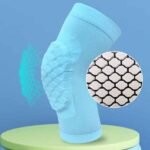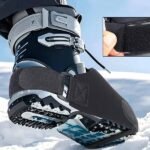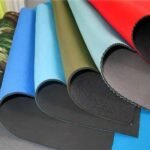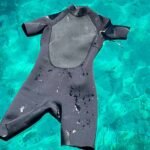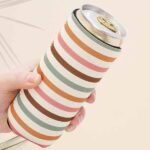Struggling to find a fabric that matches the unique properties of neoprene? Neoprene has become a popular material for its versatility, durability, and water resistance. However, whether you’re a designer, manufacturer, or eco-conscious consumer, understanding alternative fabrics with similar traits can open doors to innovation or cost-saving opportunities.
Neoprene fabric, known for its elasticity, thermal insulation, and water resistance, has few true equals. But materials like scuba, nylon, and polyester offer comparable characteristics depending on your needs.
Imagine you’re choosing materials for outdoor gear or fashion products but need cost-effective or eco-friendly substitutes. Understanding neoprene and its alternatives will help you make the right decision.
What is neoprene fabric?
Neoprene is a synthetic rubber material commonly used in wetsuits, bags, gloves, and other outdoor products. Known for its high elasticity, shock resistance, and waterproof properties, neoprene is both functional and versatile.
Neoprene fabric is a foamed rubber material sandwiched between fabric layers, offering water resistance, flexibility, and insulation for various applications.
Developed in the 1930s by DuPont, neoprene has since revolutionized industries like sportswear and medical supplies. Its spongy texture, paired with the ability to resist extreme temperatures, makes it irreplaceable in many contexts.
Key Features of Neoprene Fabric
| Feature | Benefit |
|---|---|
| Elasticity | Allows stretch and flexibility |
| Water Resistance | Ideal for aquatic and outdoor uses |
| Thermal Insulation | Retains body heat in cold environments |
| Shock Absorption | Protects against impact |
What is neoprene similar to?
Neoprene’s unique characteristics are hard to replicate fully, but some fabrics come close. Scuba fabric, nylon, and polyester are common alternatives that mimic neoprene’s stretch, durability, or water resistance.
Fabrics like scuba, nylon, and polyester share similarities with neoprene in flexibility, waterproofing, and durability, depending on the application.
Each of these substitutes brings distinct advantages. For instance, while scuba fabric mirrors neoprene’s stretch, nylon stands out for lightweight strength, and polyester offers affordability and water resistance.
Examples of Applications for Similar Fabrics
- Scuba Fabric: Used in fashion garments and lightweight wetsuits.
- Nylon: Common in outdoor gear like jackets and bags.
- Polyester: Popular in cost-effective outdoor clothing and accessories.
Is scuba fabric the same as neoprene?
Comparison of Scuba Fabric and Neoprene
Scuba fabric is often mistaken for neoprene due to its similar appearance and stretch. However, they differ in composition and application.
Scuba fabric resembles neoprene in flexibility and smoothness but lacks neoprene’s foamed rubber core, making it less effective for insulation and water resistance.
While neoprene has a rubber core, scuba fabric is typically made of a polyester-spandex blend. This gives it the stretch and aesthetic appeal of neoprene but with lower thermal and waterproof properties.
Advantages and Limitations
Advantages of Scuba Fabric:
- Lightweight and breathable
- Affordable for fashion items
- Easy to sew and customize
Limitations of Scuba Fabric:
- Less insulation
- Not fully waterproof
Is neoprene similar to nylon?
Neoprene vs. Nylon: Key Differences
Nylon, a synthetic polymer, is known for its lightweight and durable nature. While it shares some traits with neoprene, such as strength and water resistance, its applications differ significantly.
Nylon is similar to neoprene in water resistance and durability but lacks the elasticity and thermal insulation neoprene provides.
Nylon excels in lightweight applications like outdoor clothing, tents, and bags, while neoprene is better for products requiring stretch and insulation.
Use Cases for Nylon
| Nylon Application | Why Choose Nylon? |
|---|---|
| Backpacks and Travel Gear | Lightweight and durable |
| Outdoor Jackets | Water resistance and windproofing |
| Parachutes and Ropes | High tensile strength |
Is neoprene similar to polyester?
Comparing Neoprene and Polyester
Polyester is a widely used synthetic fabric known for affordability and water resistance. While it shares some functional traits with neoprene, its performance differs in flexibility and insulation.
Polyester matches neoprene in water resistance and durability but lacks its elasticity and thermal retention, making it less suitable for stretchable or insulating products.
Polyester is commonly used in garments, accessories, and upholstery due to its cost-effectiveness and ease of maintenance.
Advantages of Polyester
- Affordable: Cost-effective for large-scale production.
- Durable: Resistant to wear and tear.
- Water-Resistant: Suitable for outdoor use.
What is a natural alternative to neoprene?
Exploring Sustainable Options
For eco-conscious consumers, natural rubber and cork fabrics are potential substitutes for neoprene. These materials offer varying degrees of flexibility, water resistance, and insulation while reducing environmental impact.
Natural rubber and cork fabric provide sustainable alternatives to neoprene, with similar elasticity and waterproof properties in specific applications.
Advantages of Natural Rubber:
- Biodegradable
- Excellent elasticity
- Water-resistant
Advantages of Cork Fabric:
- Lightweight and durable
- Water-resistant
- Eco-friendly and renewable
| Alternative | Features | Common Uses |
|---|---|---|
| Natural Rubber | Elastic, waterproof, biodegradable | Yoga mats, outdoor gear |
| Cork Fabric | Lightweight, durable, eco-friendly | Bags, wallets, and upholstery |
Challenges of Natural Alternatives
While these substitutes reduce environmental concerns, they may lack neoprene’s durability or versatility in some applications. Balancing sustainability with functionality is key.
Conclusion
Choosing a fabric similar to neoprene depends on your specific needs. Whether it’s scuba fabric for fashion, nylon for lightweight durability, or polyester for cost-effectiveness, each substitute offers unique advantages. For eco-conscious choices, natural rubber and cork fabrics provide sustainable options.
At Szoneier, we specialize in manufacturing neoprene products like bags, koozies, and gloves, offering high-quality, customizable solutions. Whether you’re looking for neoprene or exploring alternatives, our expertise ensures you’ll find the perfect fit for your needs. Contact us today to discuss your next project!


